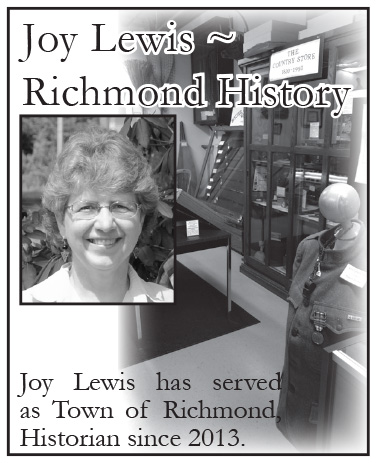The Alchemist-Lewis J. Beam-He changed iron into gold-Part 1 of 2
by Joy Lewis –
Seven days he was on the train. From his home in Canadice he walked the few miles to Livonia Station where he boarded a westbound train. Arriving a week later in St. Louis, he made his way by river barge to St. Joseph, three hundred miles distant; this voyage took another week. It was from St. Joe that his adventure began in earnest. The next one hundred eighteen days he spent walking.
It was early April 1856 when twenty-two-year-old Lewis Beam set out to make his way to the gold fields of California. Like many another adventurer before him, he found the streets of St. Joseph, Missouri, a-swarm with humanity – upwards of 5,000 pioneers readying to make the journey west. Here he partnered with a company of three other single men; they pooled their resources to purchase a wagon ($120), two yoke of oxen ($20 per ox), provisions for themselves, and a quarter ton of hay to feed the team for a couple weeks – paying upwards of two dollars a hundredweight – until the grass along the trail would be sufficiently high for the oxen to graze. Potatoes were selling for a dollar a bushel, white beans for a dollar-and-a-quarter, and flour more than six dollars a barrel.
Lewis and his partners joined a train of seven other wagons, under the able leadership of a man who’d made the trip before. Making from seven to twenty-two miles each day, fording rivers swollen with spring melt, battling wind and cold and rain, the party reached Fort Kearny, Nebraska, toward the end of April. A contemporary diarist wrote that “Fort Kearny is a pretty place. There are some fourteen houses in it, three frame buildings two stories high. The other houses are made of grass sods or mud, the roofs are covered with dry grass. There is a store, blacksmith shop, hospital and a post office.”
The next leg of the trip along the Platte River took them in three weeks’ time to Fort Laramie in Wyoming. In the going they passed a half dozen emigrants on the back trail, encountered a party of amiable Sioux, killed scores of rattlesnakes, and battled millions of flies. The fort they found to be a busy trading post, with “about twenty houses enclosed by a wall.” Here they stayed for a week or so, storing up six hundred pounds of fresh cut hay to feed the oxen as they contemplated crossing the mountains. For themselves they restocked their supplies, paying dearly for bacon and ham, sugar and flour and salt.
There were more rivers to ford, wolves to guard against, and hoards of mosquitoes to combat. They heard tales of misery – measles and dysentery and accidental gunshot wounds; beheld a litter of bleached white buffalo carcasses. Shallow graves marked both sides of the trail; they passed two or three each and every day. They saw, too, abandoned wagons, dead oxen, horses, and mules. Household goods were scattered about, where others had sought to lighten their load: log chains, ox yokes, horse collars, cooking stoves, spinning wheels, even plow shares. Water became scarce or was alkaline. A hot sun burned down by day, water froze in the bucket overnight. They dealt with a lame ox, survived a sandstorm, learned to cook their meals over a fire of buffalo chips.
Ten days out from Laramie Lewis and his companions arrived at Independence Rock – a pillar of pure granite, two hundred fifty feet high, a sentinel rising out of the surrounding plain. Thousands and thousands of names were engraved and painted upon its flanks, enshrining for decades to come the immigrants’ passing.
Though it was late-June the party encountered cold as bitter as February as they entered the mountains. A day’s travel gained them only six or eight miles now. Their first difficult crossing lay at Pratt’s Pass. For more than six hours they labored over a narrow rugged road until at nightfall they came out of the cut into a meadow that previous arrivals had dubbed “Blooming Grove.” Here they encamped. Another two days brought them to the Continental Divide, “the summit of the dividing ridge between the waters of the Atlantic and Pacific oceans.”
When finally they made it out of the mountains, there was yet the desert to cross. After thirty-six miles without a single watering hole, the company arrived at a spring expecting to find fresh water, but found the water to be “brackish and disagreeable to the taste.” It was to be another day’s travel before they could refill their barrels with fresh water.
As they faced the last obstacle – the foreboding Sierra Nevada – they arrived in mid-August at the Mormon Station, “a perfect skinning post for emigrants.” The camp was brimming with shopkeepers unfavorably compared by the pioneers to Yankee nutmeg peddlers. Flour and coffee and other needed supplies were on offer at sky-high prices.
The final push down into the Sacramento Valley brought them at last to the gold fields near San Francisco. Here Lewis parted from his trail-mates, pursuing his way among the rowdy throngs of fortune seekers. He remained in the mining camps but a short while. By year’s end he had met the man who would propel him to riches.
The story of Lewis J. Beam continues at https://www.owllightnews.com/lewis-j-beam-part2/.
